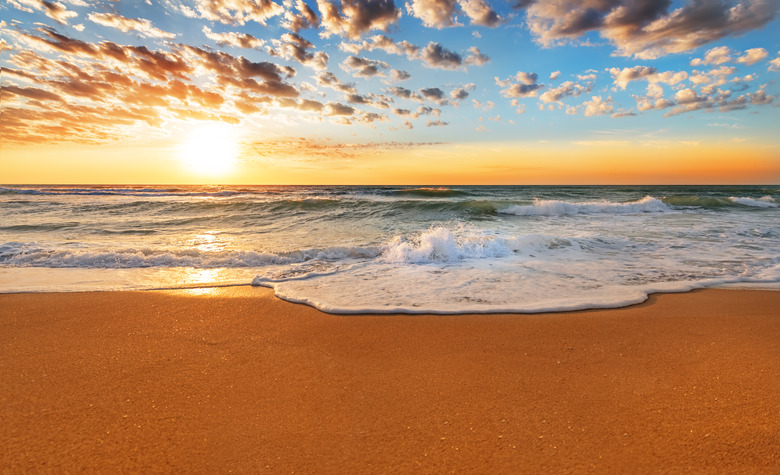The Difference Between Low Tides & High Tides
Low tides and high tides produce among the most noticeable phenomena along seacoasts and tidal rivers. Depending on the location and the relative position of the Earth to the moon and sun – the celestial bodies that create tides by exerting a gravitational force on our planet – the difference between high and low tide, the "tidal range," may be small or dramatically large.
The Water
The Water
The most obvious difference between low tide and high tide is the water level at a given point. Generally, high tide and low tide both occur twice a day, meaning a roughly six-hour period separates each. The tidal range describes the vertical elevation difference between high and low tides; because of their configuration and that of the coastal seafloor, coastlines see greater tidal ranges – often 5 to 10 feet – than the open ocean. The Bay of Fundy in southeastern Canada sees the world's greatest tidal range: 50 feet or more.
The Lunar Cycle
The Lunar Cycle
The lunar cycle primarily determines tidal behavior because the moon, being relatively close to the Earth, exerts an important gravitational force on the planet. When the moon is over a given location on the Earth – which happens once every 24 hours and 50 minutes – it pulls ocean water on that side of the planet toward it in a tidal bulge. Another tidal bulge forms on the opposite side of the Earth because the planet, closer to the moon than the ocean surface on that side, is pulled moonward more than the water. Those tidal bulges in line with the moon create high tides on both sides of the planet; low tides happen midway between the two tidal bulges.
The Sun
The Sun
The sun's gravity also impacts the high tides and low tides, though less so than the moon because the sun lies so much farther away from the Earth. The alignment of moon, sun and Earth – which happens at new moons and full moons – creates the greatest tidal variation and highest tides: the so-called "spring tides." When the moon is at first quarter or third quarter, the gravitational forces of sun and moon counteract one another and a lower tidal range, the "neap tides," results.
Lunar Altitude
Lunar Altitude
The moon does not orbit at a constant height from the Earth: at points it lies closer to the planet, and at points farther away. This naturally impacts the tides. When the moon's orbit takes it farthest from the Earth – a point called "apogee" – diminished tidal ranges result, the opposite being true at "perigree," when the moon passes closest to the Earth. The difference between low tide at one point of the cycle and high tide at another may be small.
Cite This Article
MLA
Heskey, Emile. "The Difference Between Low Tides & High Tides" sciencing.com, https://www.sciencing.com/difference-low-tides-high-tides-7894145/. 5 April 2018.
APA
Heskey, Emile. (2018, April 5). The Difference Between Low Tides & High Tides. sciencing.com. Retrieved from https://www.sciencing.com/difference-low-tides-high-tides-7894145/
Chicago
Heskey, Emile. The Difference Between Low Tides & High Tides last modified March 24, 2022. https://www.sciencing.com/difference-low-tides-high-tides-7894145/
